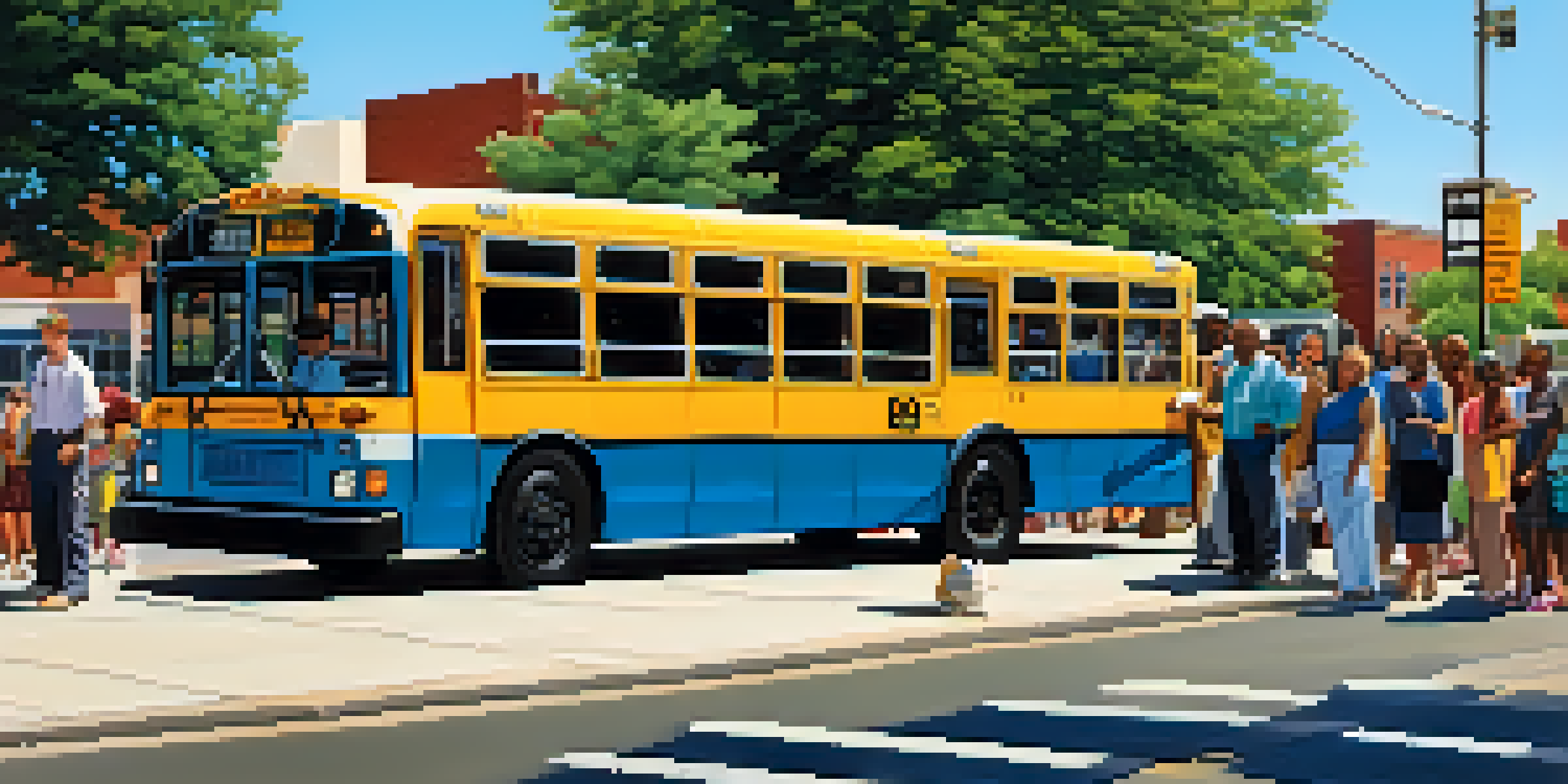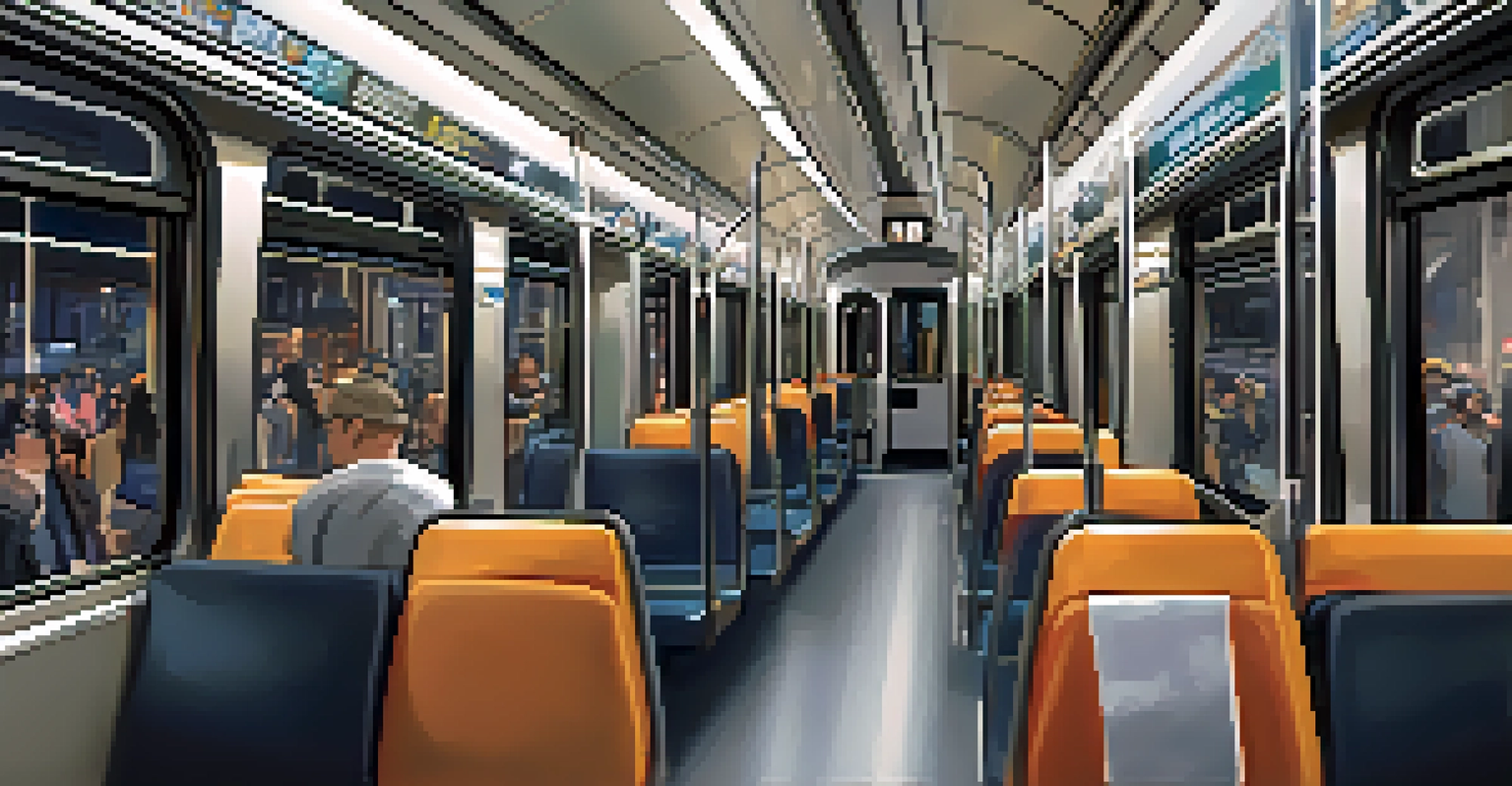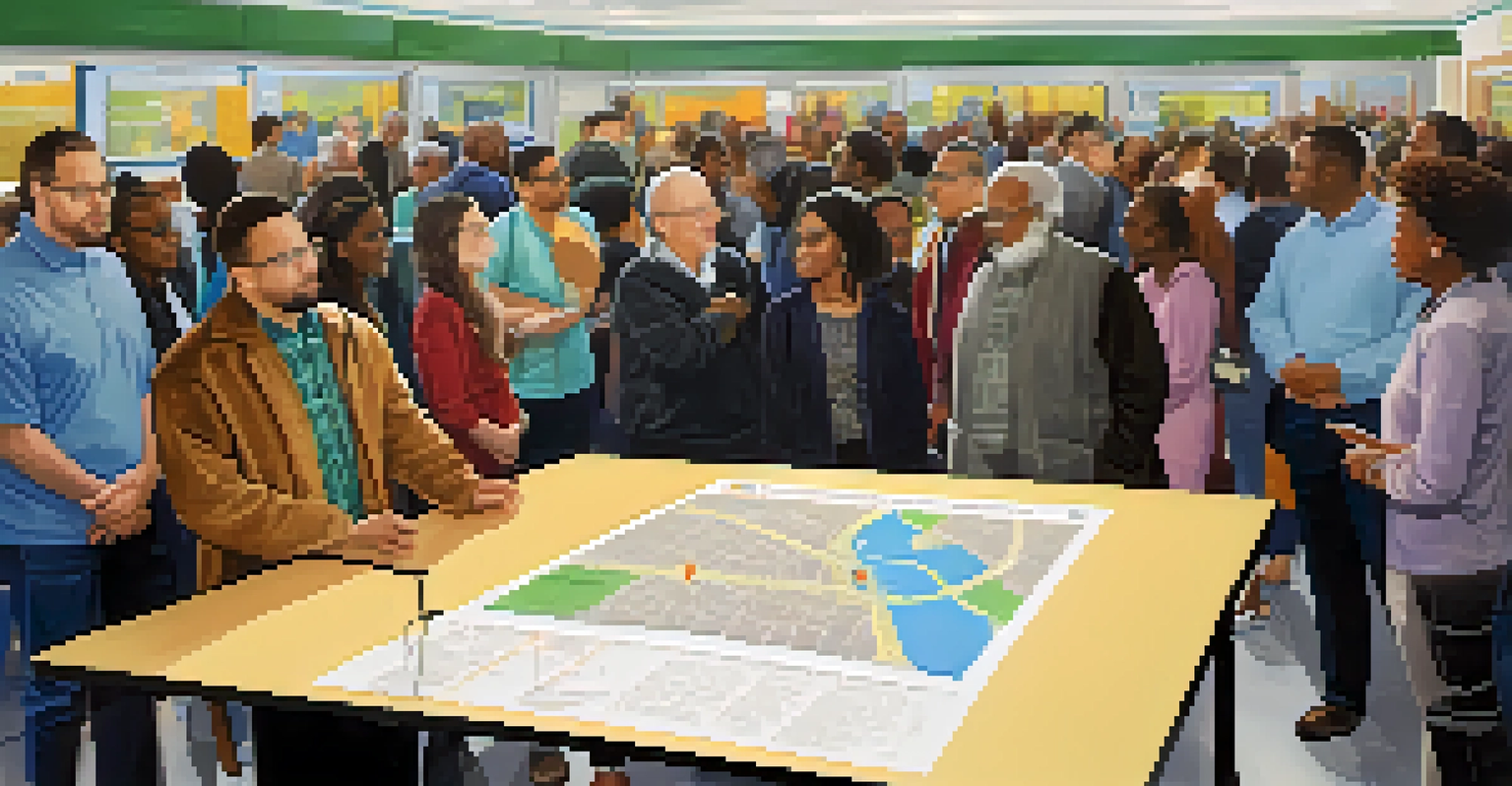Accessibility in Newark: Public Transit for All Residents

Understanding Accessibility in Public Transit
Accessibility in public transit means ensuring that all residents, regardless of their physical abilities, can effectively use transportation systems. In Newark, this concept is pivotal as it ensures that everyone can navigate the city seamlessly. This encompasses features like ramps, elevators, and adequately designed seating that accommodate individuals with disabilities.
Accessibility is not a privilege, it is a right. It is a fundamental part of a community that ensures everyone can participate fully in society.
It's not just about physical access; it's also about providing information in formats that everyone can understand. Whether it's through audio announcements for the visually impaired or clear signage for those with cognitive disabilities, accessibility ensures that no one is left behind. The goal is to create an inclusive environment where all residents feel welcome.
Moreover, ensuring accessibility in public transit contributes to a more vibrant community. When everyone can easily move around, it enhances social interactions and economic opportunities, ultimately benefiting the entire city. Newark's commitment to accessibility signifies its dedication to inclusivity and equity for all.
Current State of Newark's Public Transit System
Newark's public transit system has made significant strides in recent years, particularly in enhancing accessibility. With the introduction of low-floor buses and accessible light rail services, residents with mobility challenges can now travel with greater ease. These initiatives are crucial for ensuring that everyone can access vital services and amenities throughout the city.

However, there are still areas where improvements are needed. For instance, some bus stops lack proper curb cuts or accessible pathways, which can pose challenges for individuals using wheelchairs or walkers. Increasing awareness and investment in these areas will further enhance the overall accessibility of the transit system.
Importance of Accessibility Features
Accessibility in public transit ensures that all residents, regardless of physical abilities, can navigate the city effectively.
Additionally, collaboration with community organizations and advocacy groups plays a vital role. By gathering feedback from residents with disabilities, transit authorities can identify specific needs and implement changes that truly make a difference. This ongoing dialogue is essential for creating a truly inclusive public transit system.
Key Features of Accessible Transit in Newark
One of the standout features of Newark's accessible transit is the integration of real-time information systems. These systems provide up-to-the-minute updates on bus and train schedules, helping users plan their journeys more effectively. For those with hearing impairments, visual displays at stations ensure everyone can access crucial information.
Public transportation is the backbone of a community, and it should be accessible to all, regardless of their physical abilities.
Moreover, the presence of dedicated staff trained in assisting individuals with disabilities is another significant aspect. These staff members are often available at major transit hubs to offer guidance and support, ensuring that every journey is as smooth as possible. Their training includes understanding the specific needs of various disabilities, which enhances the overall experience.
Additionally, Newark has focused on creating a user-friendly environment at transit stations. Features such as tactile paving for the visually impaired and clear, contrasting signage make it easier for all residents to navigate. These thoughtful designs reflect a commitment to inclusivity that sets a positive example for other cities.
Community Feedback and Involvement
Community feedback is crucial in shaping an accessible public transit system. Newark actively seeks input from residents, particularly those with disabilities, to understand their unique challenges and needs. This involvement helps transit authorities prioritize improvements that will have the greatest impact.
Public forums and surveys are just a couple of ways the city gathers insights from the community. By encouraging open dialogue, Newark fosters a sense of ownership among residents, creating a collaborative approach to accessibility. When people feel heard, they are more likely to engage and support future initiatives.
Community Involvement Drives Change
Active community feedback is crucial for identifying needs and prioritizing improvements in Newark's transit system.
Moreover, involving community members in decision-making processes can lead to innovative solutions. Residents can share their experiences and suggest practical changes that may not have been considered otherwise. This grassroots approach ensures that accessibility measures are relevant and effective.
Challenges Facing Accessible Transit in Newark
Despite the progress made, challenges remain in ensuring complete accessibility in Newark's public transit. One of the primary hurdles is funding; while there are initiatives in place, financial constraints can limit the scope of improvements. Allocating sufficient resources is essential for maintaining and expanding accessible features.
Additionally, the aging infrastructure in some areas can complicate accessibility efforts. Older transit stations may not have been designed with modern accessibility standards in mind, requiring significant renovations to meet current needs. Addressing these infrastructural challenges demands careful planning and investment.
Furthermore, public awareness of accessibility issues is vital. Many residents may not fully understand the challenges faced by individuals with disabilities, leading to a lack of support for necessary changes. Educational campaigns can help foster empathy and encourage community members to advocate for a more accessible transit system.
Future Plans for Enhancing Accessibility
Looking ahead, Newark is committed to expanding its accessibility initiatives within public transit. Plans include upgrading existing infrastructure and incorporating more accessible features in future projects. This proactive approach demonstrates the city's dedication to inclusivity and improving the quality of life for all residents.
In addition to physical upgrades, there are also plans to enhance training programs for transit staff. These programs aim to equip employees with the skills needed to assist individuals with diverse disabilities effectively. By investing in training, Newark is creating a more supportive environment for all users.
Challenges and Future Plans Ahead
Despite progress, funding and infrastructure challenges remain, but Newark is committed to enhancing accessibility through future initiatives.
Collaboration with technology companies is also on the horizon, aiming to leverage innovative solutions for accessibility. From mobile apps that provide tailored transit information to automated systems that enhance safety, these advancements can significantly improve the overall transit experience for everyone.
The Importance of Inclusivity in Urban Transit
Inclusivity in urban transit goes beyond mere compliance with regulations; it fosters a sense of belonging among all community members. When public transit is accessible, it empowers individuals to participate fully in their communities, whether it's accessing jobs, education, or social activities. This empowerment is essential for building a vibrant, dynamic city.
Moreover, accessible public transit contributes to economic growth. By enabling individuals with disabilities to travel freely, cities can tap into a previously underutilized workforce. This not only benefits the individuals involved but also enriches the local economy, creating a more diverse and robust job market.

Ultimately, prioritizing inclusivity in transit reflects a community's values and commitment to equity. Newark's ongoing efforts to enhance accessibility signify a broader movement toward creating a city where everyone, regardless of ability, can thrive and contribute to the community.